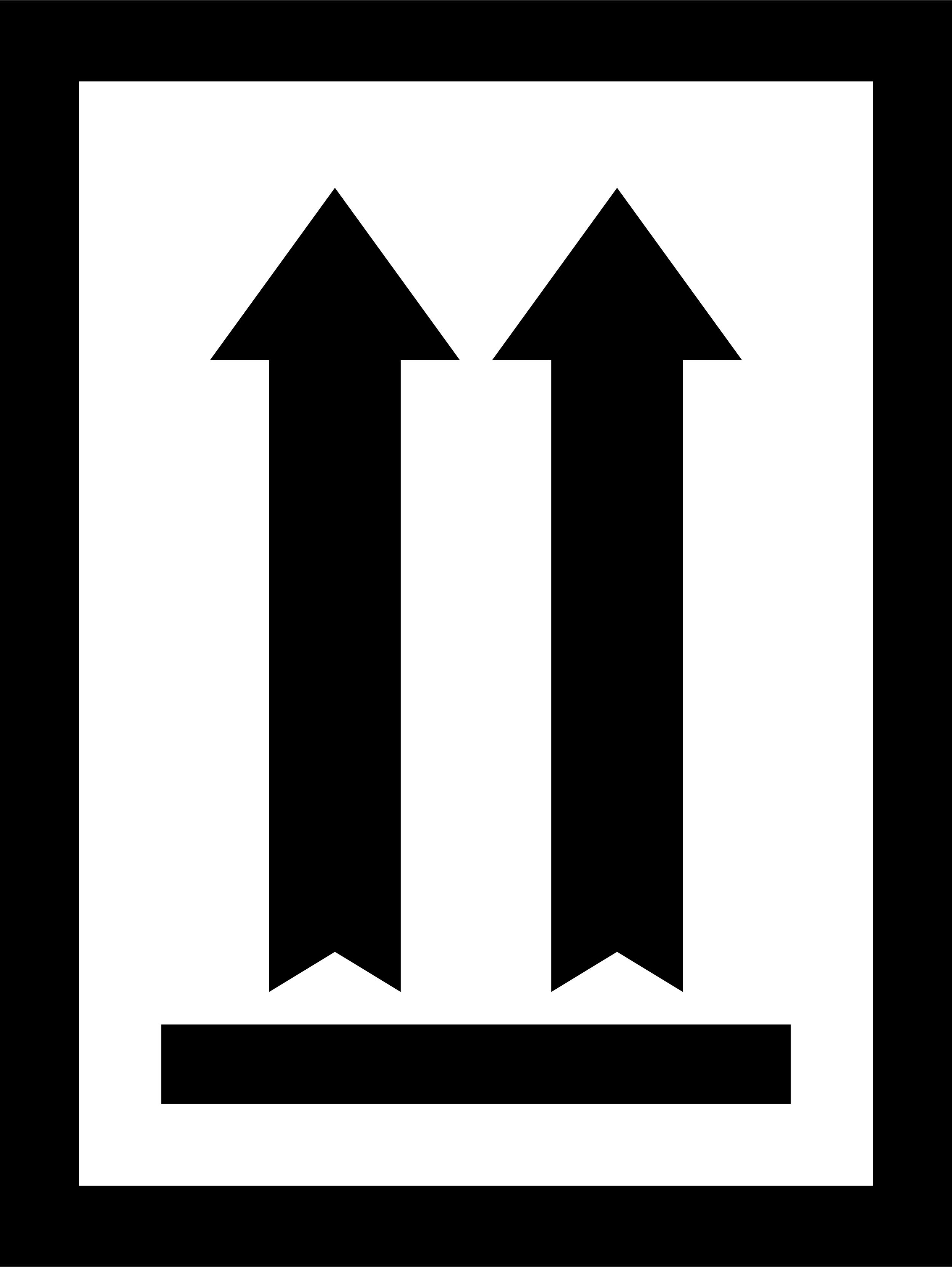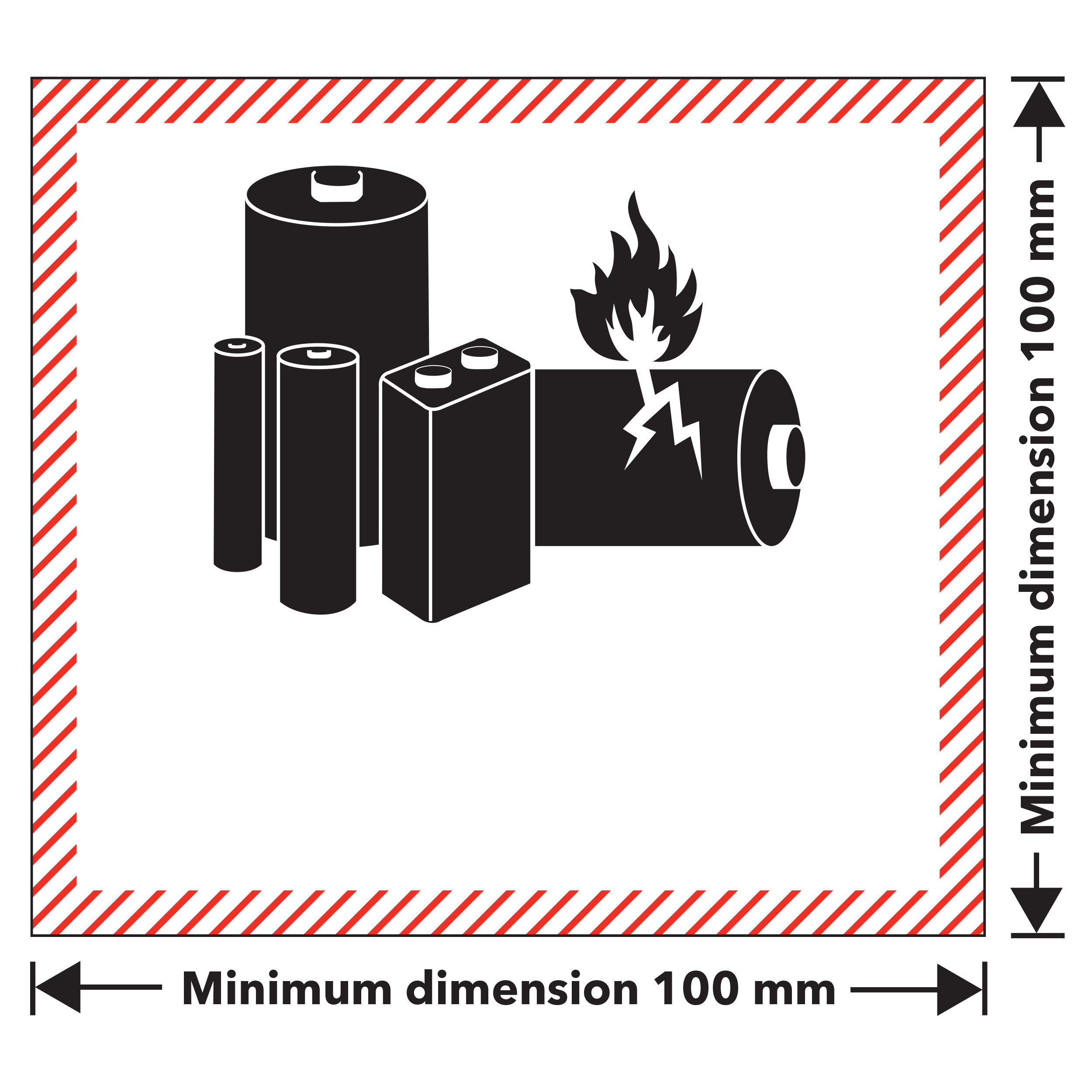IMDG marking requirements

- The IMDG Code requires that all packaging of dangerous goods be marked with their proper shipping name, UN number, and additional marks or symbols as required for handling and storing the goods.
Marking requirements in the International Maritime Dangerous Goods (IMDG) Code address the marking of dangerous goods according to their properties. Additional marks or symbols indicating precautions for handling or storing a package (such as a symbol indicating that a package must be kept dry) may be displayed on a package if appropriate.
Unless otherwise provided, the proper shipping name for the dangerous goods and the corresponding UN number, preceded by the letters “UN”, must be displayed on each package. The UN number and the letters “UN” must meet the minimum dimensions listed in the Code.
Example: CORROSIVE LIQUID, ACIDIC, ORGANIC, N.O.S. (caprylyl chloride) UN 3265.
For unpackaged articles, the mark must be displayed on:
- The article,
- Its cradle, or
- Its handling, storage, or launching device.
For goods of division 1.4, compatibility group S:
- The division and compatibility group letter must also be marked, or
- The label for 1.4S must be displayed.
All package marks required by the Code:
- Must be readily visible and legible;
- Must survive with information still identifiable on packages after at least three months immersed in the sea. When choosing marking methods, the durability of the packaging materials and the surface of the package must be considered;
- Must be on a background of contrasting color on the outside of the package; and
- Must not be located with other marks that could reduce their effectiveness.
Salvage packagings, including large salvage packagings and salvage pressure receptacles, must also be marked with the word “SALVAGE” in lettering at least 12 mm high.
Intermediate bulk containers (IBCs) of more than 450 L capacity and other large packagings must be marked on two opposite sides.
Special marking for radioactive material
For radioactive materials, each package must be marked on the outside with an identification of the consignor, consignee, or both. Each overpack must be marked on the outside with an identification of the consignor, consignee, or both, unless these marks on all packages in the overpack are clearly visible. Excepted packages of class 7 radioactive material must be marked as required by International Maritime Dangerous Goods (IMDG) Code Section 5.1.5.4.1.
Each package with gross mass exceeding 50 kg must be marked with its permissible gross mass on the outside of the packaging.
Specific package types require additional marks as follows:
- A Type IP-1, Type IP-2, or Type IP-3 package must be marked on the outside of the packaging with “TYPE IP-1”, “TYPE IP-2”, or “TYPE IP-3” as appropriate.
- A Type A package design must be marked on the outside of the packaging with “TYPE A”.
- A Type IP-2, Type IP-3, or Type A package must be marked on the outside of the packaging with:
- The international vehicle registration code (VRI code) of the country of origin of design, and
- Either the name of the manufacturer or other identification of the packaging specified by the competent authority of the country of origin of design.
Each package that conforms to a design approved under one or more of paragraphs specified in IMDG Code Section 5.2.1.5.5 must be marked on the outside of the package with the following information:
- The identification mark allocated to that design by the competent authority;
- A serial number to uniquely identify each packaging that conforms to that design;
- “Type B(U)”, “Type B(M)”, or “Type C”, in the case of a Type B(U), Type B(M) or Type C package design.
For each package with a Type B(U), Type B(M) or Type C package design, the trefoil symbol must appear on the outside of the outermost receptacle that is resistant to the effects of fire and water. The symbol must be embossed, stamped, or otherwise resistant to the effects of fire and water.
Any mark on the package relating to the package type that does not relate to the UN number and proper shipping name assigned to the consignment must be removed or covered.
If LSA-I or SCO-I material is contained in receptacles or wrapping materials and transported under exclusive use provisions, the outer surface of these receptacles or wrapping materials may bear the mark “RADIOACTIVE LSA-I” or “RADIOACTIVE SCO-I”, as appropriate.
If international transport of packages requires competent authority approval of design or shipment, and different approval types apply in the different countries concerned by the shipment, marking must be according to the requirements of the country of origin of the design.
Special marking for marine pollutants
With limited exceptions, packages containing marine pollutants must be marked with the marine pollutant mark. The mark must be located adjacent to other required marks.
The mark must be in the form of a square set at an angle of 45° (diamond-shaped). The symbol of a fish and tree must be black on white or a suitable contrasting background. Minimum dimensions must be met. If the size of the package requires, the dimensions may be reduced, provided the mark remains clearly visible.
All labeling provisions of IMDG Code Section 5.2.2 apply in addition to the requirement for the marine pollutant mark.
Orientation arrows
With few exceptions, the following packagings must be legibly marked with package orientation arrows similar to those shown in IMDG Code Section 5.2.1.7 or meeting the specifications of ISO 780:1997:
- Combination packagings with inner packagings containing liquid dangerous goods;
- Single packagings fitted with vents;
- Cryogenic receptacles intended for the transport of refrigerated liquefied gases; and
- Machinery or apparatus containing liquid dangerous goods when it is required to ensure the liquid dangerous goods remain in their intended orientation.
The orientation arrows must appear on two opposite vertical sides of the package with the arrows pointing in the correct upright direction. They must be rectangular and large enough to be clearly visible considering the size of the package. A rectangular border around the arrows is optional.

Orientation arrows are not required on:
- Outer packagings containing pressure receptacles (except cryogenic receptacles);
- Outer packagings containing dangerous goods in inner packagings, each not more than 120 mL, with enough absorbent material to completely absorb the liquid contents;
- Outer packagings containing infectious substances in primary receptacles each containing not more than 50 mL;
- Type IP-2, IP-3, A, B(U), B(M) or C packages containing class 7 radioactive material;
- Outer packagings containing articles that are leak-tight in all orientations; or
- Outer packagings containing dangerous goods in hermetically sealed inner packagings, each not more than 500 mL.
Arrows for purposes other than indicating proper package orientation must not be displayed on a package marked according to IMDG Code Section 5.2.1.7.
Excepted and limited quantities
Packages containing excepted quantities of dangerous goods must be marked according to IMDG Code Section 3.5.4. Packages containing dangerous goods packed in limited quantities must be marked according to IMDG Code Section 3.4.5.
Lithium battery mark
Packages containing lithium cells or batteries prepared according to special provision 188 must be marked as shown in IMDG Code Section 5.2.1.10.
The mark must indicate the UN number, preceded by the letters “UN”. If lithium cells or batteries are contained in or packed with equipment, the UN number preceded by the letters “UN” must be indicated. When a package contains lithium cells or batteries assigned to different UN numbers, all applicable UN numbers must be indicated.

*Place for UN number(s)
**Place for telphone number for additional information.
Minimum dimensions are 100 mm x 100 mm.
The mark must be a rectangle or a square with hatched edging and meet minimum dimensions. The symbol showing a group of batteries must be black on white or suitable contrasting background. The hatching must be red. If the size of the package so requires, the dimensions may be reduced to not less than 100 mm wide × 70 mm high.
